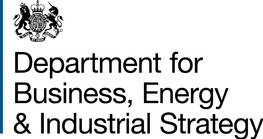Data collections
The DDC provides five main types of data and guidance, which meet certain criteria laid down by the TGICA. They are introduced briefly here and described in more detail throughout the web site and accompanying guidelines:
1. Climate estimates from observations
The climate datasets comprise 1961-1990 mean monthly data over global land areas for nine variables on a 0.5º latitude/longitude grid, together with decadal anomalies from this mean for the period 1901-1995. This data set is currently being updated to 2000 and interpolated to a finer resolution (10 x 10 arc minutes). Pointers are provided to other relevant global climatologies.2. Global climate model data
Global climate model data is available as at a range of frequencies or as climatologies. Data is held for climate model projections used as input to the Second, Third, Fourth and Fifth IPCC Assessment Reports. Full details of the variables held can be found on the relevant data pages. The climatologies of climate model projections can also be viewed through the DDC visualisation service.Daily fields for earlier Assessment Reports are not provided by the DDC; for the 4th Assessment Report they are available from the CMIP3 archive at PCMDI (though some data in the CMIP3 archive was added after the 4th Assement Report).
3. Socio-economic data and scenarios
Socio-economic data and scenarios are important for characterizing the vulnerability and adaptive capacity of social and economic systems in relation to global and regional climate change. The DDC provides access to baseline and scenario data related to population, economic development, technology and natural resources for use in climate impact assessments. The reference data include country and regional level indicators of socio-economic and resource variables. The scenario data supplied extend to 2100 and are based on the assumptions underlying the set of emissions scenarios developed for the IPCC Special Report on Emissions Scenarios, SRES in 2000, as well as the six IS92 emissions scenarios prepared by the IPCC in 1992.4. Data and scenarios for other environmental changes
Some data and information for other environmental changes is also included in the site. These include data on global mean CO2 concentration, global and regional sea-level rise, regional ground-level ozone concentration, sulphate aerosol concentration and sulphur deposition. All of these scenarios were developed for the IPCC Third Assessment Report based on the SRES emissions scenarios. Detailed documentation and guidance is also provided for the use of these data.5. Linked data resources
The DDC also provides links to datasets which have been reviewed and pass a set of linking criteriea.User support
- More information about the guidelines can be found here;
- There is a "Frequently Asked Questions" page;
- Results of a user survey conducted in April/May 2009 can be read here.
 "
"




